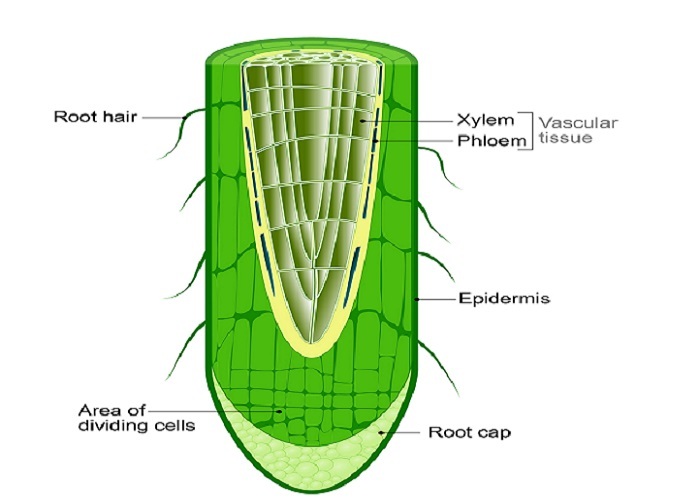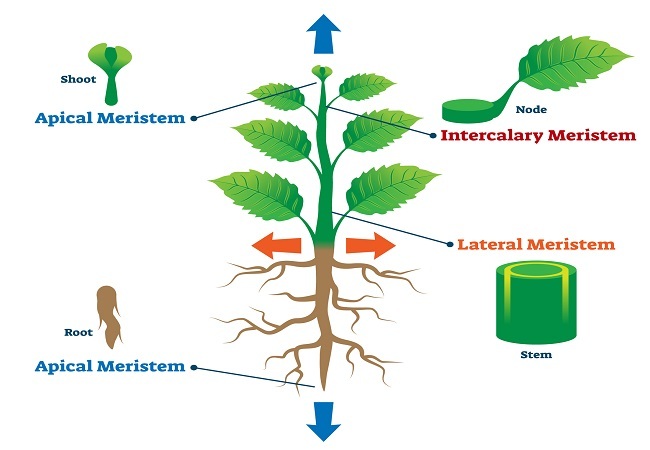
 Data Structure
Data Structure Networking
Networking RDBMS
RDBMS Operating System
Operating System Java
Java MS Excel
MS Excel iOS
iOS HTML
HTML CSS
CSS Android
Android Python
Python C Programming
C Programming C++
C++ C#
C# MongoDB
MongoDB MySQL
MySQL Javascript
Javascript PHP
PHPPhysics
Chemistry
Biology
Mathematics
English
Economics
Psychology
Social Studies
Fashion Studies
Legal Studies
- Selected Reading
- UPSC IAS Exams Notes
- Developer's Best Practices
- Questions and Answers
- Effective Resume Writing
- HR Interview Questions
- Computer Glossary
- Who is Who
Regions of Roots
Introduction
The regions of a root system help a tree to keep the roots safer and stronger in order to get a good supply of water into the tree. The roots serve as the base of a tree as it acts like a mouth of that botanical species. This is the reason why roots must be covered with some soil. The classification in several regions of a root provides a brief overview of these roots. Therefore, the learners can understand the meaning of every region along with the way it works to keep a plant healthy.
Root Cap Region

Figure 1: Regions of Roots
This region of a root system that comes first if someone observes a root from the bottom is called the root cap as they are the head of a root system. The root cap covers the head of the root when it comes in touch with the soil. This part of the system acts as a cover for the area of the apical meristem. The function of this part of the root system is to protect the apex from multiple dangers present under the soil. This is the reason why this part of the root is covered by mucilage which serves as a natural lubricant.
This helps the root to go deeper inside the soil in spite of the frictions. The root cap is subject to constant regeneration as the preceding cells decompose when the root gets deeper. There are a few plants that have multiple caps placed on their root, one such example is a tree called pandanus.
Region of Cell Division

Figure 2: Various Meristematic Tissue in Plants
The region of cell division has a different name; it is called the region of meristematic cells. They are very close to the region of the root cap as a difference of a few millimetres remains between these two regions. The region of this cell division needs to multiply by creating more cells inside the root system. Researchers are able to see a dense concentration of protoplasm present inside the region of cell division.
This happens to carry out the desired goal of multiplying the cells that is present inside the system of a root. There is a strict division of the cells that lie in this region. They are divided into three layers of roots; the first one is called a dermatogen that matures to form the root cap before the current one passes away.
The second layer known as the periblem grows up to be a cortex. The work of this cortex is to store a lot of water and nutrients to help the xylem carry them to the leaves. The final layer of the roots which is the central region is known as the plerome.
Region of Elongation
The purpose served by this region of the root system is to help the root grow in terms of length. This is the reason why they are called the region of elongation. They are cells that were formed recently but lost their ability to regenerate themselves. This is the reason why they serve the root system by helping them get bigger in size. The region of elongation helps the root to get further down the subsoil to collect fresh water for the process of photosynthesis. A suitable environment means the water level is not on the deeper end of the soil. Therefore, the root grows in such conditions where the size does not go beyond 8 mm.
Region of Maturation
The region of cell maturation serves as a place where the cell matures to help the root grow bigger by size. The root matures to develop from a lateral perspective as it grows both vertically and horizontally. The region is covered with root hairs that serve as an instrument for collecting vital nutrients. After cell reaches a certain level of maturity they can act as an anchor too. This is the way the tree can stand tall where mild storms are not enough to uproot the tree.
Function of Root System
The function of a root system is classified into two primary objectives - the first one is to aid the tree by gathering supplies of vital nutrients. The second goal serves as an anchor that firmly binds the tree to the soil. Both of these functions collectively look for the well-being of a tree. Apart from these two significances, the root also operates as a unit where various nutrients are stored. This is the reason why some roots are even used as a vegetable for animal fodder or food for human beings. An example of a root system filled with nutrients is potatoes.
Conclusion
In this tutorial, all the readers can get the function and location of different regions present on the roots. The learners and researchers who are reading this tutorial can refer to the diagrams. A section dedicated to the general functions of a root system is also mentioned to optimize the entire concept of regions in a root system.
FAQs
Q1. How long does a root grow in the soil?
Ans. The root can grow up to 4-8 mm in a suitable climate. Plants in the desert exceed that level as water lacks in such places
Q2. When do the primary roots originate?
Ans. The root originates during the germination of the seed under humid conditions.

